Past Principals and Former Presidents
Past Principals
The board, authorized to appoint a principal teacher to administer the college under the direction of the president of Texas A&M College, selected Mr. L.W. Minor, who served in that capacity for only one year. On March 11, 1878, eight young Negro men became the first of their race to enroll in a state-supported college in Texas. Among the instructors were two brothers, E.H. and L.C. Anderson, who became the second and third principals of the young and struggling college.
 E.H. Anderson became principal in 1879, when the enrollment grew to 60 students. The A&M College Board of Directors, meeting in Hempstead on August 28 of that year, authorized the teaching of 13 subjects on the elementary and secondary levels.
E.H. Anderson became principal in 1879, when the enrollment grew to 60 students. The A&M College Board of Directors, meeting in Hempstead on August 28 of that year, authorized the teaching of 13 subjects on the elementary and secondary levels.
 L.C. Anderson became principal of Prairie View A&M in 1885 and served for 12 years. He was also the founder of the dynamic and politically active Colored Teachers Association of Texas. He managed a college budget of $39,000 and staff of 11 instructors in what was essentially a normal school program. The gray stone administration building was erected in 1890, and Prairie View became embroiled in an intense and sometimes bitter legislative and political debate over the status and future of the college. The Twentieth Legislature agreed to the attachment of an Agricultural and Mechanical Department to the normal School, and the Hatch Act brought the college a branch of the Experiment Station. Other facilities erected included an academic hall, six cottages for teachers, a brick mechanics shop, and artesian wells.
L.C. Anderson became principal of Prairie View A&M in 1885 and served for 12 years. He was also the founder of the dynamic and politically active Colored Teachers Association of Texas. He managed a college budget of $39,000 and staff of 11 instructors in what was essentially a normal school program. The gray stone administration building was erected in 1890, and Prairie View became embroiled in an intense and sometimes bitter legislative and political debate over the status and future of the college. The Twentieth Legislature agreed to the attachment of an Agricultural and Mechanical Department to the normal School, and the Hatch Act brought the college a branch of the Experiment Station. Other facilities erected included an academic hall, six cottages for teachers, a brick mechanics shop, and artesian wells.
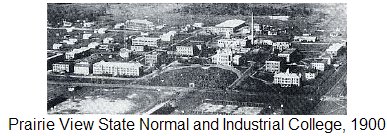 In 1897, Edward L. Blackshear was elected principal of the college, and he served until 1915. During his tenure, the curriculum and the physical plant grew significantly. In 1889, the Twenty-sixth Legislature changed the name of the school to Prairie View State Normal and Industrial College, and the new name reflected the expansion of the curriculum. The Twenty-seventh Legislature, in 1901, authorized the school to offer a four-year course of study that included the Academy and Normal School in four Divisions: education, agriculture, home economics and mechanical arts. A diploma and Bachelor of Science degree were given upon completion of any curriculum. The first three degrees were granted in 1903. New additions to the physical plant during this period included two dormitories for men, Foster Hall and Luckie Hall (1909), Crawford Hall for women (1912), and a combination auditorium/dining hall (1911).
In 1897, Edward L. Blackshear was elected principal of the college, and he served until 1915. During his tenure, the curriculum and the physical plant grew significantly. In 1889, the Twenty-sixth Legislature changed the name of the school to Prairie View State Normal and Industrial College, and the new name reflected the expansion of the curriculum. The Twenty-seventh Legislature, in 1901, authorized the school to offer a four-year course of study that included the Academy and Normal School in four Divisions: education, agriculture, home economics and mechanical arts. A diploma and Bachelor of Science degree were given upon completion of any curriculum. The first three degrees were granted in 1903. New additions to the physical plant during this period included two dormitories for men, Foster Hall and Luckie Hall (1909), Crawford Hall for women (1912), and a combination auditorium/dining hall (1911).
 I.M. Terrell, the fifth principal, held the position during the war years of 1915-1918. Despite the world conflict, the school plant expanded significantly. A household arts building, a power and ice plant, and a laundry building were erected in 1916. Spence Hall was erected in 1918 to house the Division of Agriculture. The close of World War I brought the first recognized Reserve Officers Training Corps to the campus. The Cooperative Extension Service was also launched at this time.
I.M. Terrell, the fifth principal, held the position during the war years of 1915-1918. Despite the world conflict, the school plant expanded significantly. A household arts building, a power and ice plant, and a laundry building were erected in 1916. Spence Hall was erected in 1918 to house the Division of Agriculture. The close of World War I brought the first recognized Reserve Officers Training Corps to the campus. The Cooperative Extension Service was also launched at this time.
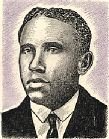 The sixth principal of Prairie View was J.G. Osborne, whose tenure lasted from 1918 to 1925. The nursing division was established in 1918, and six buildings were added to the campus in 1924 and 1925: a veterinary hospital, science building, college exchange, elementary training school, home economics practice cottage, and music conservatory. The four-year senior college program was begun in 1919 and included training in vocational home economics, vocational agriculture, liberal arts, and mechanical arts.
The sixth principal of Prairie View was J.G. Osborne, whose tenure lasted from 1918 to 1925. The nursing division was established in 1918, and six buildings were added to the campus in 1924 and 1925: a veterinary hospital, science building, college exchange, elementary training school, home economics practice cottage, and music conservatory. The four-year senior college program was begun in 1919 and included training in vocational home economics, vocational agriculture, liberal arts, and mechanical arts.
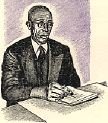 W.R. Banks became principal in 1926 and served until his retirement in August of 1947, when he was named principal emeritus. During this period, the physical plant doubled in size with the addition of a dining hall, a hospital, three apartment buildings for male teachers, three dormitories for women, a greenhouse, an incubator house, a classroom building, an NYA resident center, a library, and more than 60 cottages for faculty families.
W.R. Banks became principal in 1926 and served until his retirement in August of 1947, when he was named principal emeritus. During this period, the physical plant doubled in size with the addition of a dining hall, a hospital, three apartment buildings for male teachers, three dormitories for women, a greenhouse, an incubator house, a classroom building, an NYA resident center, a library, and more than 60 cottages for faculty families.
The Senior Academy was discontinued in 1930 and the division of Education was renamed the College of Arts and Sciences with major department in teacher-training. The Division of Graduate Study was organized in 1937, offering Master of Science degrees in agricultural economics, rural education, agricultural education, school administration and supervision, and rural sociology.
The name Prairie View Normal and Industrial College was changed by the Forty-Ninth Legislature in 1945 to Prairie View University, and the school was authorized to offer, “as the need arises”, all courses offered at the University of Texas.
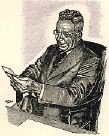 Dr. Edward B. Evans became the eighth principal on September 1, 1947. That same year, the Fiftieth Legislature changed the name of the institution to Prairie View Agricultural and Mechanical College of Texas. The act provided that “courses be offered in agriculture, the mechanic arts, engineering, and the natural sciences connected therewith, together with any other courses authorized at Prairie View at the time of passage of this Act, all of which shall be equivalent to those offered at the Agricultural and Mechanical College of Texas.”
Dr. Edward B. Evans became the eighth principal on September 1, 1947. That same year, the Fiftieth Legislature changed the name of the institution to Prairie View Agricultural and Mechanical College of Texas. The act provided that “courses be offered in agriculture, the mechanic arts, engineering, and the natural sciences connected therewith, together with any other courses authorized at Prairie View at the time of passage of this Act, all of which shall be equivalent to those offered at the Agricultural and Mechanical College of Texas.”
In March of 1947, the Old Administration Building was destroyed by fire. The fiftieth Legislature, then in session, made an emergency appropriation of $300,000 for the erection of the present administration building, which was completed in March of 1949.
Former Presidents
The title of principal of the college was changed to Dean by the Board of Directors effective during the 1947-48 school year. However, on September 1, 1948, the title was changed to President, and on December 3, 1948, Dr. E.B. Evans, the eighth Principal, was inaugurated as the first President of Prairie View Agricultural and Mechanical College of Texas. The divisions of the college became schools, and the Directors of the respective schools became Deans.
A new women’s dormitory completed in September of 1950 was named for the late Dean of Women, Miss M.E. Suarez. A similar building for men, completed in 1952, was named for former teacher J.M. Alexander. The E.B. Evans Animal Industries Building was completed in 1951, and the Gibb Gilchrist Engineering Building was completed in 1952. Two additional dormitories, one for men and one for women, were completed in 1955, along with a dairy barn and utility warehouses. A home economics building, May Hall, was added in 1957, and the old home arts building was converted to a modern music building. The Memorial Student Center and Harrington Science Building were completed in 1960 and 1961, respectively, followed by the health and physical education building in 1964 and two air-conditioned dormitories in 1965.
Prairie View A&M was accepted for membership in the Southern Association of Colleges and Schools in December of 1958 and later received full accreditation by the National Council for Accreditation of Teacher Education.
Following the retirement of Dr. E.B. Evans as President Emeritus in 1966, Dr. J.M. Drew was appointed to the position. Dr. Drew became ill shortly after taking office and was replaced by Dr. Evans who served briefly as acting president.
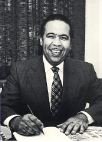 Dr. Alvin I. Thomas, elected as the third president of Prairie View Agricultural and Mechanical College in November 1966, introduced the residential college concept. As Prairie View A&M’s centennial approached, the Board of Regents of the newly-titled Texas A&M University System, at the request of President Thomas, appointed 79 persons to a Centennial Planning Council and charged them with formulating a new master plan for Prairie View A&M for the 1970’s. After 16 months of serious study, the council’s recommendations were published in a document entitled, A Developmental Plan, 1970-80, Prairie View A&M College of Texas. As an outgrowth of this plan and recommendations to the state legislature, the name of the institution was again changed to Prairie View A&M University, and its status as an independent unit of the Texas A&M University System was reconfirmed. The System Board of Regents, in the fall of 1970, sold in excess of $13 million in bonds for the construction of two new residence halls and a dining facility. The residence halls, accommodating 1,500 students, were opened for occupancy in August of 1972. The dining facility, now known as Alumni Hall, opened in the second semester of the 1972-73 academic year. Other major construction completed during the following decade included the fire and security building, Farrell Hall Laundry, Burleson-Ware ROTC Building, Hobart Taylor Hall, the engineering building, and the Owens-Franklin Health Center. In 1980-81, the state of Texas purchased and renovated a building in the Texas Medical Center complex to be used as a clinical nursing center for the College of Nursing. In 1981-82, broadcasting began from newly constructed facilities of FCC-approved KPVU-FM at Prairie View, an instructional laboratory of the Department of Communications. In 1981, the Texas legislature officially recognized Prairie View as not only a general purpose university but also as a “special purpose institution” providing services to students of “diverse ethnic and socioeconomic backgrounds.” The physical plant, valued at approximately $12 million in 1966, was valued at more than $50 million at this time. Curricula offerings, research, and Cooperative Extension activities had been greatly enhanced.
Dr. Alvin I. Thomas, elected as the third president of Prairie View Agricultural and Mechanical College in November 1966, introduced the residential college concept. As Prairie View A&M’s centennial approached, the Board of Regents of the newly-titled Texas A&M University System, at the request of President Thomas, appointed 79 persons to a Centennial Planning Council and charged them with formulating a new master plan for Prairie View A&M for the 1970’s. After 16 months of serious study, the council’s recommendations were published in a document entitled, A Developmental Plan, 1970-80, Prairie View A&M College of Texas. As an outgrowth of this plan and recommendations to the state legislature, the name of the institution was again changed to Prairie View A&M University, and its status as an independent unit of the Texas A&M University System was reconfirmed. The System Board of Regents, in the fall of 1970, sold in excess of $13 million in bonds for the construction of two new residence halls and a dining facility. The residence halls, accommodating 1,500 students, were opened for occupancy in August of 1972. The dining facility, now known as Alumni Hall, opened in the second semester of the 1972-73 academic year. Other major construction completed during the following decade included the fire and security building, Farrell Hall Laundry, Burleson-Ware ROTC Building, Hobart Taylor Hall, the engineering building, and the Owens-Franklin Health Center. In 1980-81, the state of Texas purchased and renovated a building in the Texas Medical Center complex to be used as a clinical nursing center for the College of Nursing. In 1981-82, broadcasting began from newly constructed facilities of FCC-approved KPVU-FM at Prairie View, an instructional laboratory of the Department of Communications. In 1981, the Texas legislature officially recognized Prairie View as not only a general purpose university but also as a “special purpose institution” providing services to students of “diverse ethnic and socioeconomic backgrounds.” The physical plant, valued at approximately $12 million in 1966, was valued at more than $50 million at this time. Curricula offerings, research, and Cooperative Extension activities had been greatly enhanced.
Upon Dr. Thomas’s resignation in June 1982, Dr. Ivory Nelson took office as acting president.
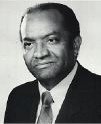 On January 27, 1983, Dr. Percy A. Pierre was appointed the fourth president of Prairie View A&M University. Two new public policy imperatives were extant at that time: The Texas A&M University System’s commitment to academic excellence, and the state’s commitment to the enhancement of Prairie View A&M University to spur greater integration. These two imperatives resulted in the Target 2000 Report published in May of 1983 and the Texas Plan published in August of 1983. They outlined short-term and long-term courses of development that have significantly changed and will significantly change Prairie View A&M University. The goals outlined were given credibility in November of 1984 by an amendment to the State Constitution that names Prairie View A&M University as an “institution of the first class” and gives it an equitable share of the proceeds of the Permanent University Fund. For the first time in the 106-year history of the university, the state of Texas agreed to fund Prairie View on the same basis as Texas A&M and the University of Texas.
On January 27, 1983, Dr. Percy A. Pierre was appointed the fourth president of Prairie View A&M University. Two new public policy imperatives were extant at that time: The Texas A&M University System’s commitment to academic excellence, and the state’s commitment to the enhancement of Prairie View A&M University to spur greater integration. These two imperatives resulted in the Target 2000 Report published in May of 1983 and the Texas Plan published in August of 1983. They outlined short-term and long-term courses of development that have significantly changed and will significantly change Prairie View A&M University. The goals outlined were given credibility in November of 1984 by an amendment to the State Constitution that names Prairie View A&M University as an “institution of the first class” and gives it an equitable share of the proceeds of the Permanent University Fund. For the first time in the 106-year history of the university, the state of Texas agreed to fund Prairie View on the same basis as Texas A&M and the University of Texas.
New educational directions were taken in the pursuit of academic excellence through the establishment of the new Roy G. Perry College of Engineering Technology and the Benjamin Banneker Honors College. The Roy G. Perry College of Engineering Technology developed out of the old College of Industrial Education through the elimination of most vocational and industrial technology programs; the upgrading of existing programs; and the introduction of three new programs in computer engineering technology and electrical and mechanical engineering technology. The Benjamin Banneker Honors College serves the university by providing honors level programs.
In a move to increase efficiency and improve educational effectiveness, the university merged the colleges of Agriculture and Home Economics with the Roy G. Perry College of Engineering Technology, which was renamed the College of Applied Sciences and Engineering Technology, beginning September 1987. The colleges of Agriculture and Home Economics became departments in the new college. The Computer Science program was transferred from the Department of Mathematics and Computer Science to the Department of Engineering Technology.
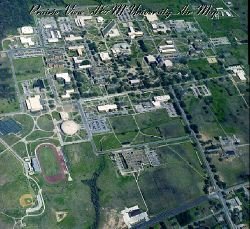 The physical development of the campus proceeded according to the Master Plan of August 1984, which sought to enhance the historic part of the campus through new building construction, renovations, and exterior construction and landscaping. Among new buildings constructed were the five story John B. Coleman Library, the Agricultural Research Building, the Chemical Engineering Laboratory Building, the Education and Classroom Building, the Engineering Technology Building, the Johnson-Phillip All Faiths Chapel, the Central Receiving and Warehouse buildings, the new Gymnasium, and the Intramural Athletic Complex. Buildings renovated include the Field House, the Home Economics Building, the Harrington Science Building, the President’s House, the Physical Plant Building, the Power Plant, and the Gilchrist Engineering Building. Exterior construction converted the campus to a pedestrian campus with the construction of several major malls and broad walkways between them. Since 1983, PVAMU’s enrollment increased more than 25 percent, and the university’s endowment increased from $300,000 to over $3 million.
The physical development of the campus proceeded according to the Master Plan of August 1984, which sought to enhance the historic part of the campus through new building construction, renovations, and exterior construction and landscaping. Among new buildings constructed were the five story John B. Coleman Library, the Agricultural Research Building, the Chemical Engineering Laboratory Building, the Education and Classroom Building, the Engineering Technology Building, the Johnson-Phillip All Faiths Chapel, the Central Receiving and Warehouse buildings, the new Gymnasium, and the Intramural Athletic Complex. Buildings renovated include the Field House, the Home Economics Building, the Harrington Science Building, the President’s House, the Physical Plant Building, the Power Plant, and the Gilchrist Engineering Building. Exterior construction converted the campus to a pedestrian campus with the construction of several major malls and broad walkways between them. Since 1983, PVAMU’s enrollment increased more than 25 percent, and the university’s endowment increased from $300,000 to over $3 million.
From June 1, 1989 to December 18, 1989, Dr. Milton R. Bryant served as Interim President.
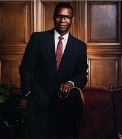 On December 15, 1989, Julius W. Becton, Jr. LTG. (Ret.) was appointed the fifth president of Prairie View A&M University, his alma mater. With nearly 40 years of active commissioned service in the U.S. Army, President Becton was the first graduate of Prairie View A&M University to attain star rank in the military.
On December 15, 1989, Julius W. Becton, Jr. LTG. (Ret.) was appointed the fifth president of Prairie View A&M University, his alma mater. With nearly 40 years of active commissioned service in the U.S. Army, President Becton was the first graduate of Prairie View A&M University to attain star rank in the military.
In the first year of his administration, President Becton took steps to improve fiscal operations. In addition, he oversaw the reaffirmation team visit by the Southern Association of Colleges and Schools, and the College of Nursing received a full eight-year accreditation from the National League of Nursing. On August 31, 1994 General Becton’s retired as President with the distinction of Honorary Doctorate approved by The Texas A&M University System Board of Regents.
Prior to the arrival of Dr. Charles A. Hines, Dr. Harold S. Bonner served as acting president.
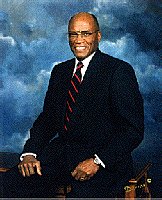 In October 1994, Dr. Charles A. Hines was appointed sixth president of Prairie View A&M University and served the University until 2002. A native of Washington D.C., Dr. Hines earned a bachelor’s degree from Howard University. Upon graduation, he entered the United States Army, where he served for more than 38 years, retiring with the rank of Major General. During his military career, Dr. Hines held many significant command and staff assignments. Additionally, he has earned two master’s degrees and a PhD from John Hopkins University and completed four executive programs at Harvard University, University of Maryland and University of Texas at Austin. Devoting much of his life to equal opportunity, education and training, advancement of rights for women, race relations and youth, President George W. Bush selected Dr. Hines to serve on the HBCU Advisory Committee. He also serves on the George H.W. Bush School of Government and Public Service at Texas A&M University.
In October 1994, Dr. Charles A. Hines was appointed sixth president of Prairie View A&M University and served the University until 2002. A native of Washington D.C., Dr. Hines earned a bachelor’s degree from Howard University. Upon graduation, he entered the United States Army, where he served for more than 38 years, retiring with the rank of Major General. During his military career, Dr. Hines held many significant command and staff assignments. Additionally, he has earned two master’s degrees and a PhD from John Hopkins University and completed four executive programs at Harvard University, University of Maryland and University of Texas at Austin. Devoting much of his life to equal opportunity, education and training, advancement of rights for women, race relations and youth, President George W. Bush selected Dr. Hines to serve on the HBCU Advisory Committee. He also serves on the George H.W. Bush School of Government and Public Service at Texas A&M University.
Among his achievements as President were the privatization of student housing, a new science building, memorial student center and establishing the University College. Dr. Hines also oversaw the University’s role in the Office of Civil Rights (OCR) settlement that resulted in the Texas Commitment funding for four new buildings, additional master’s and doctoral degree programs and dollars for development initiatives, student scholarships and endowed chairs.
Prior to the arrival of Dr. George C. Wright, Mr. Willie A. Tempton, Sr. served as acting president.
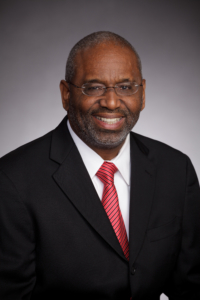 Dr. George Carlton Wright became the seventh president of Prairie View A&M University on August 15, 2003 and served in the role until June 2017. President Wright is credited with many notable accomplishments during his tenure including increasing enrollment from 6,500 to 9,000; establishing doctorates at the university in education, engineering, nursing, and juvenile justice; and instituting an Honors Program. President Wright also expanded university internationalization efforts including establishing a Confucius Institute and creating an international affairs office (resulting in a significant increase in the number of study abroad programs offered).
Dr. George Carlton Wright became the seventh president of Prairie View A&M University on August 15, 2003 and served in the role until June 2017. President Wright is credited with many notable accomplishments during his tenure including increasing enrollment from 6,500 to 9,000; establishing doctorates at the university in education, engineering, nursing, and juvenile justice; and instituting an Honors Program. President Wright also expanded university internationalization efforts including establishing a Confucius Institute and creating an international affairs office (resulting in a significant increase in the number of study abroad programs offered).
In addition, under Dr. Wright’s leadership, the university’s campus infrastructure was greatly enhanced with the opening of several state of the art facilities including the following: the Nathelyne Archie Kennedy Building (School of Architecture), Don K. Clark Building (College of Juvenile Justice and Psychology), Electrical Engineering Building, Agriculture and Business Multipurpose Building, College of Nursing Facility in the Texas Medical Center in Houston, Recreation Center, and the Panther Football Stadium.
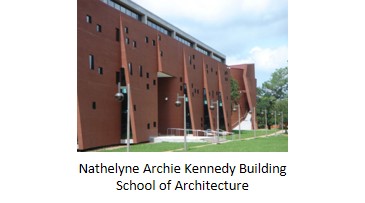

Also during President Wright’s administration, Prairie View A&M University purchased 28 Steinway pianos. As a result, the university became the 185th institution and the 4th HBCU to be designated as an All-Steinway School. President Wright said about the purchase, “This is a purchase that will affect future generations of students who want to learn music at our institution. We have purchased the best so that we can produce the best music students. These new Steinways are just as much of an investment in our current students as they are a gift to our future students.”
Other special initiatives and programs during President Wright’s administration include the establishment of the President’s Lecture and Culture Series (initially entitled the President’s Lecture Series) and President’s Reading List.
Known as an avid champion of reading, Dr. Wright used his President’s Reading List to convey the importance of reading and to increase student engagement through book discussions. The President’s Lecture and Culture Series was established to provide educational opportunities beyond the classroom and to help students gain a better understanding and appreciation of African American accomplishments and challenges. The Series was implemented annually during African American History Month and included lectures by Congressman Al Green, Congresswoman Eddie Bernice Johnson, John W. Franklin, Hanq Neal, Melynda Price, Gary Bledsoe, and PVAMU faculty. The Series also included cultural performances by Dallas Black Dance Theatre; The Ensemble Theatre; and PVAMU students, faculty, and administrators.
Initially, the President’s Lecture and Culture Series included an essay/oratory contest in which students received monetary prizes. The Series was later expanded to include both an essay/oratory contest and a juried student art competition with students competing for monetary awards.
Dr. Wright’s love of teaching, his philosophy of leading by example, and his no-nonsense approach toward fiscal responsibility inspired him to serve in a dual role of president and professor of history at the university during part of his tenure. The history courses that he taught had some of the largest enrollments of any courses offered. His dual role as president and professor helped him to take a direct, hands-on approach in educating students and enhanced student engagement efforts.
His legacy of significant accomplishments at Prairie View A&M University will be remembered as one that enabled the university to make great strides in fulfilling its mission and vision.
Prior to serving as president of Prairie View A&M University, Dr. Wright was executive vice president for academic affairs and provost at the University of Texas at Arlington. He also served as interim provost and vice president for academic affairs, provost and vice president for academic affairs, and senior vice president for academic affairs and provost while at the University of Texas at Arlington. Prior to that, he was vice provost for university programs, director of the Afro-American studies program, and the William R. Kenan, Jr., Chair in American History at Duke University. Before joining Duke University, he held the positions of assistant professor, associate professor, professor, and vice provost for undergraduate education at the University of Texas at Austin, where he was also the Mastin Gentry White Professor of Southern History. Dr. Wright began his higher education career as an assistant professor at the University of Kentucky.
A noted African American scholar, Dr. Wright has received numerous fellowships, grants, and awards. Awards include the Jean Holloway Award for Teaching Excellence, the “Eyes of Texas” Award for excellence in service and the Kappa Alpha Psi Fraternity Award for “Outstanding Black Faculty Member.” Fellowships include the Andrew W. Mellon Faculty Fellowship at Harvard University and while at the University of Texas at Austin – the Friar Society Centennial Fellowship for Teaching Excellence, the Silver Spurs Centennial Teaching Fellowship, and the Lillian and Tom B. Rhodes Centennial Teaching Fellowship.
Dr. Wright is the author of three books on race relations as follows: A History of Blacks in Kentucky: In Pursuit of Equality, 1890-1980, Volume II; Racial Violence in Kentucky, 1865-1940: Lynchings, Mob Rule, and “Legal Lynchings,” and Life Behind a Veil: Blacks in Louisville, Kentucky, 1865-1930. Dr. Wright received the Governor’s Award from the Kentucky Historical Society for two of his books, Racial Violence in Kentucky, 1865-1940: Lynchings, Mob Rule, and “Legal Lynchings,” and Life Behind a Veil: Blacks in Louisville, Kentucky, 1865-1930. Dr. Wright has authored numerous book chapters, essays, and articles.
Dr. Wright is a native of Lexington, Kentucky with a bachelor’s degree and master’s degree in history from the University of Kentucky. He received his doctorate in history from Duke University. In addition, Dr. Wright has an honorary doctorate of letters from the University of Kentucky.
